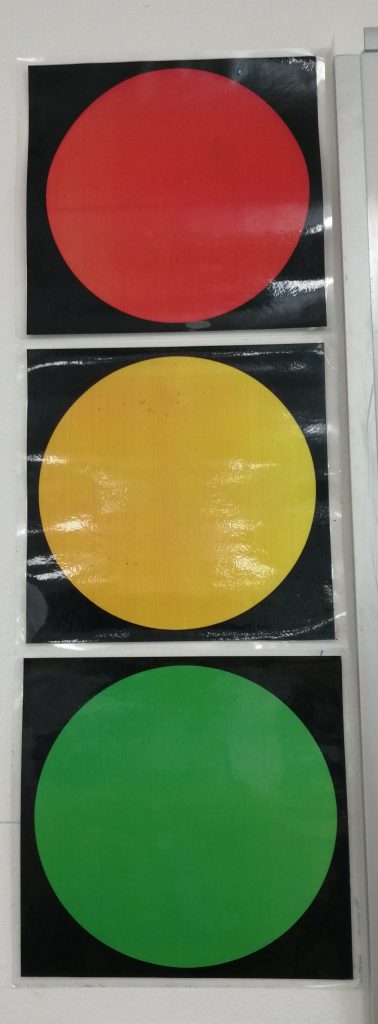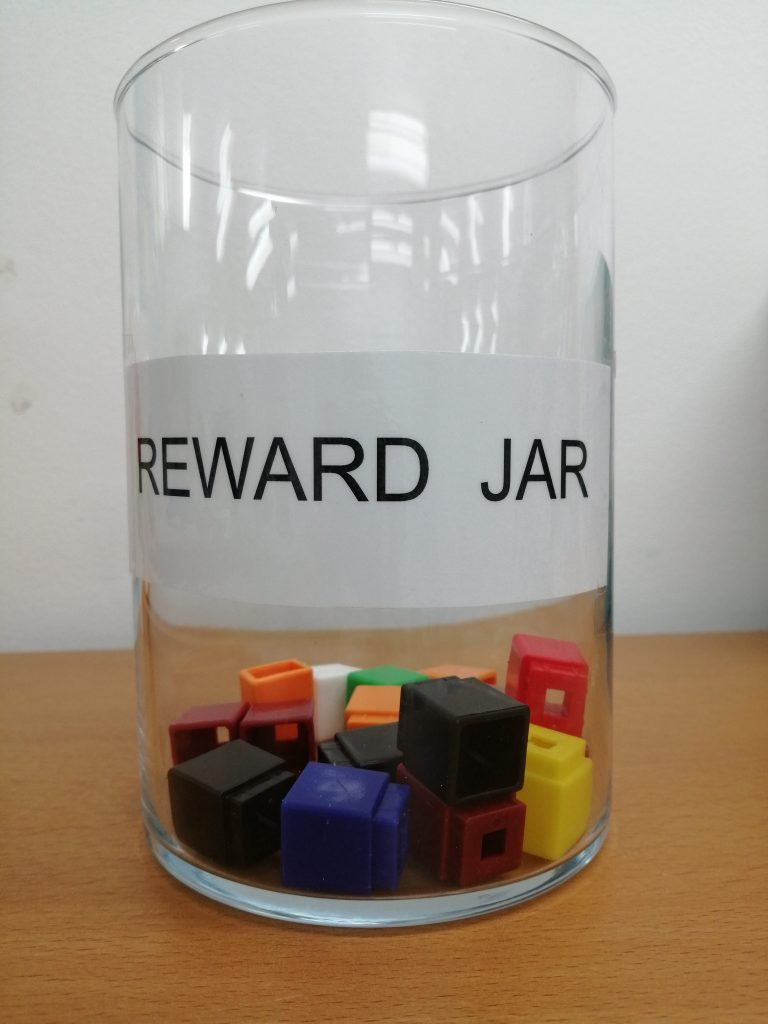A teacher’s Finnish line: Behavior management tools
There are various strategies and methods to help a teacher to manage their classroom nowadays. I will introduce to you now the 4 different systems that are currently displayed in my Year 4 classroom. However, only 3 out of the 4 systems are actively used and those same 3 methods I hadn’t used in the past. So far I have had good experiences using classroom jobs, a reward jar and house points with my present class.
The classical behavior traffic light

This system might sound more simple and unambiguous than what it can be in the reality. One of the easiest way to use it is the following:
- print and laminate pupils’ names (alongside with pictures of animated characters if you want to distinguish the names quicker from each other)
- let every pupil start the day on the green light by using Blu Tack to hang up the laminated name tags
- move every pupil’s laminated name tag throughout the day according to their behavior
The different lights can be considered as described below:
- green = a pupil’s behavior is acceptable and at the expected level
- yellow = a pupil gets a warning as a sign to stop unwanted, inappropriate behavior
- red = a pupil will face a punishment for continuing unacceptable behavior
These signs were left in my classroom from the previous academic year, I presume. Since I had experience using a modified, more complex version of the traffic light system in the past I decided to put them up in the beginning of the year and actually asked my class whether they think we’d need a punishing system like this. They were confident enough to tell me that they wouldn’t need it because they already know how to behave. Therefore, we concentrated on other, more rewarding, systems instead. These traffic light signs have been left on the wall empty without anyone’s name on them.
Classroom jobs

I do admit that having classroom jobs doesn’t directly affect the way children behave, especially during the lesson time. Nevertheless, it is playing a crucial part in a rewarding system that is presented in the next sub-section.
The main purpose of this system is to teach children responsibility and independence. Pupils have one duty for one week and by every Monday morning I have moved their laminated name tags to a new job. I move them in a zigzag order from left to right and from right to the below left card , kind of forming the letter Z. By having rotating tasks everyone gets a chance to try out how they feel in those different roles and learn each job’s related skills.
I got the idea from a colleague and edited some of the tasks and titles to suit my classroom better. For instance, due to a fitted carpet in my classroom there was no need for sweeping especially when cleaners vacuum the carpet after school.
These jobs are used in my classroom:
- line leader
- president
- vice president
- gardener
- pencil sharpener
- registration master
- doorman
- teacher’s helper
- desk cleaner
- window master
- cubicle director
- chair cleaner
- organiser
The reward jar

Before introducing this to your class you should consider the following things:
- How big of a jar you will be using?
- What kind of items will present the points?
- How many points does it take to fill up the jar?
- On which grounds are you giving those points?
- Is there a limit of points that pupils can reach daily/weekly?
- Theoretically, how long would it take for the jar to be full?
- What will the prize be once the jar reaches its limit?
I got this idea after my class asked me whether they could bring their pets to school one of the days. I double checked the restrictions of organizing a pet day from the principal and after receiving the green light it was obvious to me that I would make the children work towards that goal. The reward jar in my classroom is used to treat and reward the whole group as one, which hopefully would make them feel and act more like a team.
I linked the classroom duties to the reward jar as a way for my pupils to get one of those colored plastic cubes as one point daily. In order to receive a point from classroom jobs everyone needs to make sure to do their duty and to leave their school desk clean and tidy at the end of each day. The second way to receive a point is their behavior during my lessons. I expect all of them to be concentrating, working, sitting properly, holding up a hand if they wish to speak, listening to anyone who is speaking and demonstrating respectful, polite behavior towards me but even more so, towards their classmates. The decision regarding the behavior point is based on my overall feeling at the end of the day whether I had to remind the class about the above mentioned rules over and over again or not. However, I provide the children a chance for reflection every morning during registration period and I ask them to vote with their thumbs whether they earned those two points from the previous day or not and then I ask them to justify their answers before sharing my opinion and decision.
Houses

Compared to my reward jar method there is more individual rewarding in this system although an individual still won’t be the only one benefiting from the received points. Every pupil has the same chance to receive points but once a week all the points within one house are calculated together and a winning house will be announced. There can be small weekly prizes for the winning house and bigger ones throughout the year, e.g. a pizza party for the house who had gained to most wins throughout the past term.
The house point system is used throughout our school but I don’t see the reason why it wouldn’t work within one class too, if necessary. When it’s officially used around the school, teachers can either each reward their own pupils as they wish or they could agree on commonly used conditions. We have been allowed to give house points according to everyone’s own standards.
In order to make it fair between all the classes there is a separate points system that only concentrates on the placement of each house within each class. In other words, the yellow house’s 22 points in Year 4 (see the picture) won’t be counted together with other yellow house’s point given in other classes. Yellow house was considered as a winning house within Year 4 but it will be calculated whether yellow house placed as 1st, 2nd, 3rd or 4th in the rest of the Primary school.
Which classroom management strategies have worked the best with your class?




